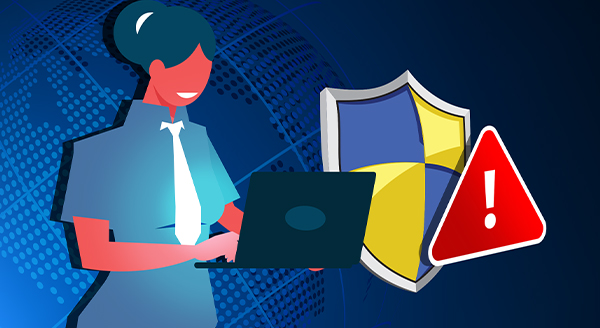Cybersecurity notifications inform businesses about potential risks and empower them to take action. Yet the various types of alerts mean different things. It can be challenging to know what action to take to protect your systems, data, and security.
Cybersecurity risks are an ongoing concern. Different incidents, threats, or vulnerabilities make the news daily, so you know you can never relax.
But you might not know what to do when you get a notification from a vendor or technology provider. Knowing the distinctions between cybersecurity notifications can help cut damage and future risks.
Common types of cybersecurity notifications
The main notifications you might get discuss vulnerabilities, security alerts, and threats. You’ll see they have different levels of urgency for you.
Vulnerability notification
This informs you of a known vulnerability once it’s identified. This might be a weak password, failing to change a default password, or not enabling multi-factor authentication. Or it may be using an outdated operating system that is no longer protected, although there’s no current attack.
You’ll typically get details about the vulnerability and its potential impact. Also, expect recommendations for applying patches, updates, or workarounds to address the issue.
Security alerts
You can get security alerts from providers such as Google or Apple that effectively ask, “Is this you?” This often happens when you use a new device to log on, for instance. If it was you, you don’t have to take action.
Yet you can also get alerts when an actual security breach or incident occurs. This might reflect a successful intrusion, unauthorized access, or a data breach. Your internet service provider, for example, might warn of a scam victimizing others.
The attack may not necessarily impact you, but this is your warning that it could or has happened. These typically detail the nature of the incident and affected systems or data. You’ll also get steps to mitigate the damage or prevent further exploitation.
Threat detected notice
Think of this as a crew member notifying the captain of the ship, “We’re under attack.” When you’re notified of a threat detected, things have escalated. Immediate action is critical.
You might need to block access to your applications or software to control the damage. You could need to implement your business continuity and disaster recovery strategies.
Other important notifications
You may also get notifications when someone detects a phishing campaign. This will warn you what it looks like and how to avoid falling victim to it.
Users often also see patch and update notifications. Don’t ignore these, because these security patches and updates can address vulnerabilities and protect against potential exploits.
How to combat these issues
Work with a managed service provider to establish cyber threat detection and response.
We can help you identify the personal, sensitive, and account data you need to protect. We’ll also monitor your network and systems along with staying on top of your security needs. Contact us here or give us a call today at 317-497-5500.


